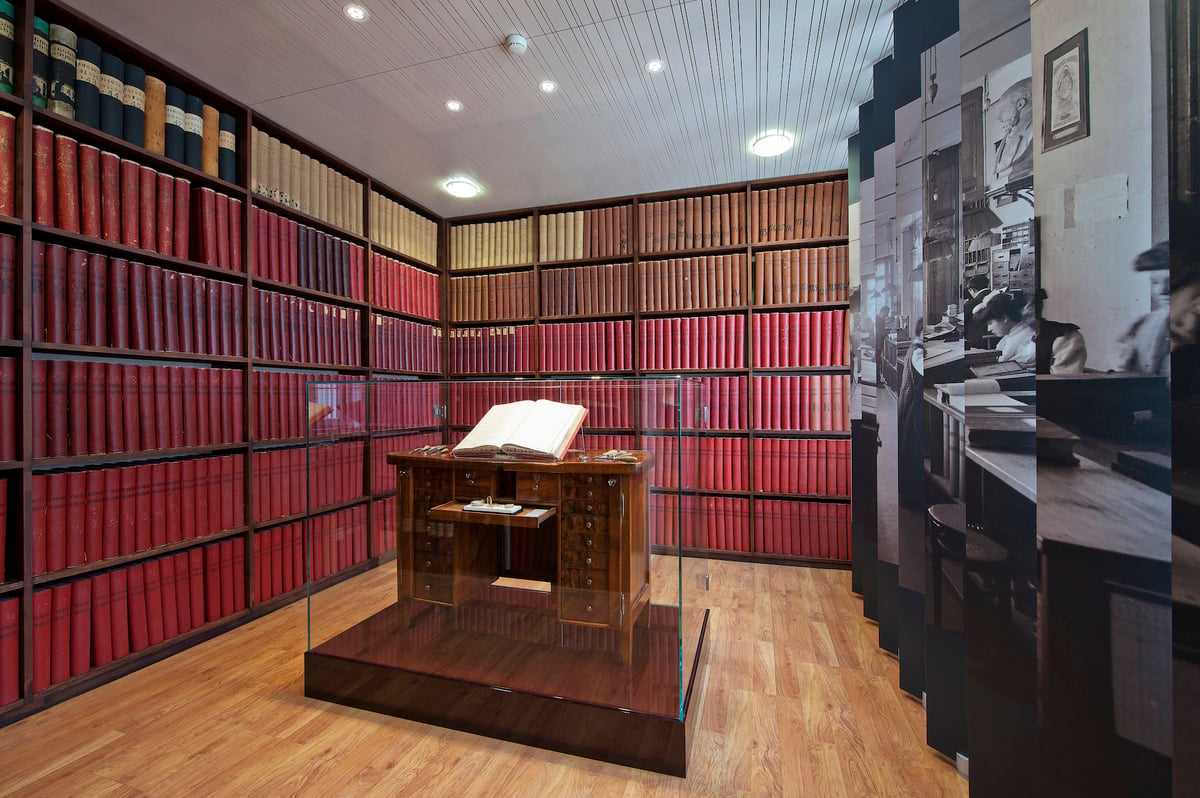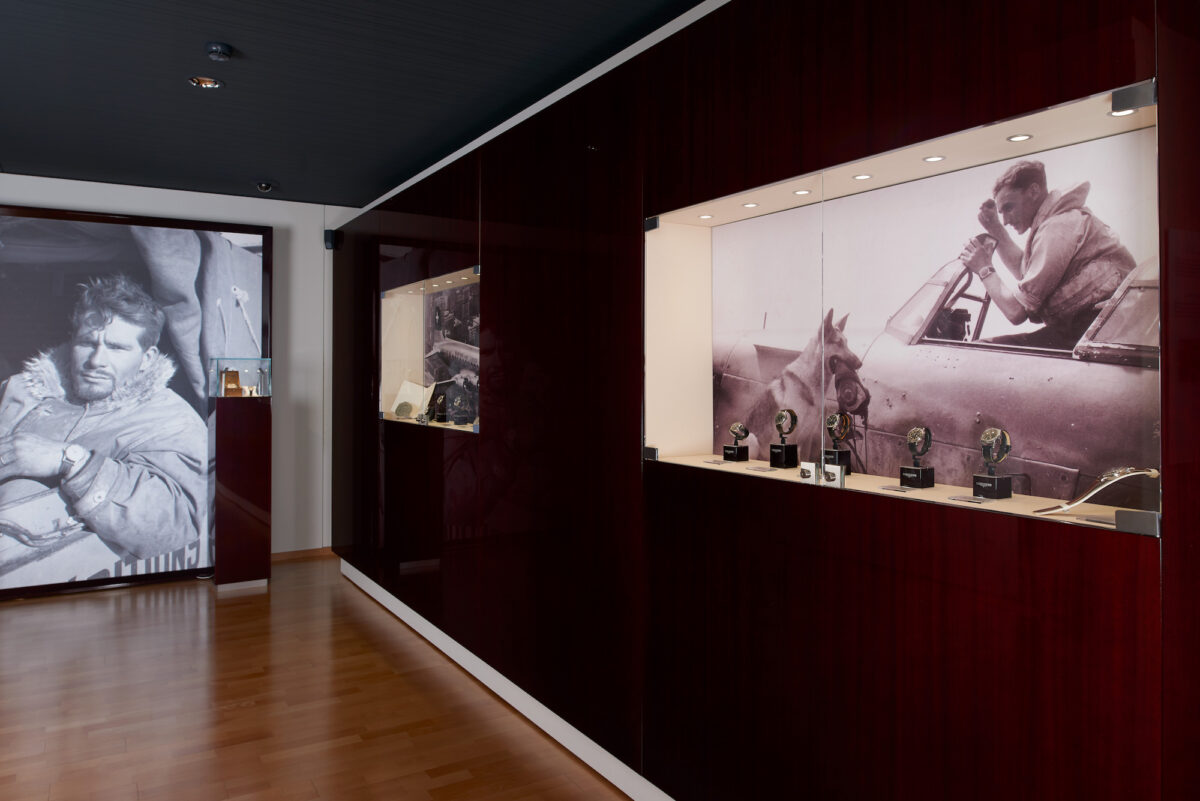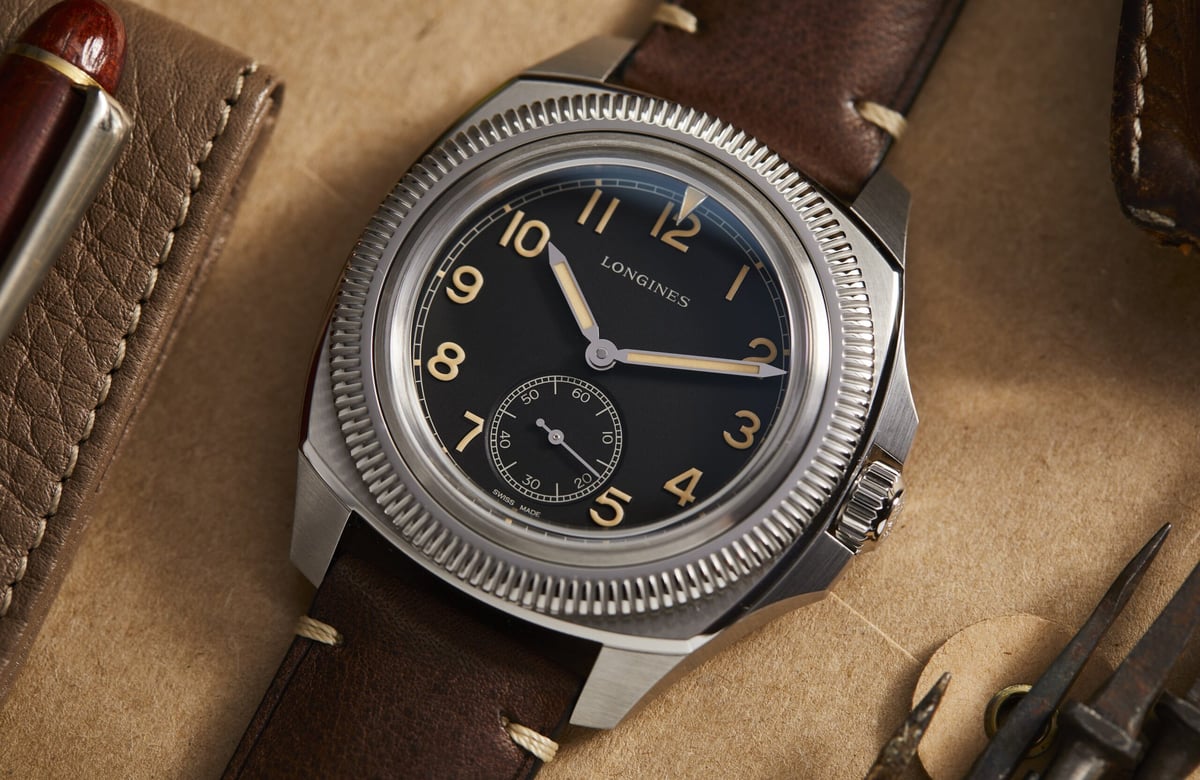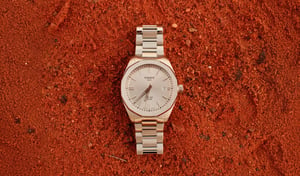We pulled into Longines’ driveway in Saint-Imier to see the terracotta-roofed white buildings of the factory shining in the cool spring sun, backdropped by the darkened valley forest. I stepped out of the car to the crisp Jura breeze and noticed a trio of flags floating lazily on their poles. A Longines flag, a Swiss flag and an Australian flag.
No one’s ever doubted Longines’ attention to detail, from the flags it flies on any given day to the technical sophistication of its watchmaking. I was about to witness it all, as the brand had granted me the rare opportunity to visit its factory. Understandably, I couldn’t wait to get inside.
Our first stop was the heritage and restoration department, situated at the top of one of the large-windowed buildings. Filled with a dozen or so expert watchmakers of different specialities, it’s where several thousand vintage Longines are sent every year for repair and restoration. The space is arguably one of the most important departments when it comes to safeguarding the history of the brand.

RELATED: The Longines Record Heritage Proves There’s No School Like The Old School
With a history that dates back nearly two centuries, Longines is one of the oldest watchmakers in the world. The restoration department is tasked with bringing any Longines timepiece they receive back to working order, meaning not only do the watchmakers need to be familiar with almost every calibre the brand has ever produced, but also capable of manufacturing any components that might be missing or broken in a vintage watch.

This work is only possible thanks to the meticulous record-keeping that Longines has undertaken over its entire history. While most Swiss watchmakers have endured periods of closure or eras where no records have survived or were kept, Longines has an archive that lists almost every single watch the brand has ever produced. Tens of millions of watches are recorded, dating back to 1832.
For more than the first century of Longines existence, these records were kept in enormous books that the brand still has today. In a room next to the museum, the archive is filled from floor to three-meter-high ceilings with leather-bound tomes, detailing specifics of nearly every watch that ever left the factory.

Today, this record is entirely digitised and forms a part of an important service that Longines offers its collectors, where archive extracts can be requested to confirm the authenticity and original details of any Longines timepiece. The only other brand to offer such a comprehensive level of service to vintage collectors is Patek Philippe.
The Longines Museum is open to the public during weekday business hours. If you’re ever in Switzerland with a spare day up your sleeve, I can’t recommend it highly enough.

Filled with some of the rarest and most important Longines watches ever made, it contains hundreds of watches that trace the brand’s journey from the earliest pocket watches, to recent electronic timing equipment for professional sports. There would never be enough time to pause over every timepiece in the museum, however, and soon enough it was time to interview Longines CEO, Matthias Breschan.
Breschan was appointed CEO in the middle of 2020 after working within the Swatch Group since 1996, including periods at both Hamilton and Rado before he joined Longines. Despite being in the top job for less than three years, he’s already had to navigate the hardest period for the watch industry since the financial crisis of 2008, with a global pandemic kicking off just as he took the reins. Despite these challenges, Longines is in the best position it’s ever been in under his watch.

“I think when a new CEO joins a company, they have to adapt to the company and not the other way around,” he explains. “It was a huge honour to join Longines as one of the leading brands in the Swiss watch industry, but when I joined, unfortunately, almost all our points of sale around the world were closed.
“However, I found out quickly that when a brand is this strong it can even go through a pandemic in an extremely strong way. Already in August 2020, we were able to achieve a turnover that was superior to August 2019, which was a record year for Longines. We weren’t able to catch up with what we had lost in the first half, but it was far from being a disaster. Now in ’23, we’re counting on a record year for Longines and we still have the objective to surpass 2 billion Swiss francs (AU$3.3 billion) in turnover in 2025.”

While not all corners of the Swiss watch industry are thriving, business is booming at Longines. This success was thanks, in part, to Longines quickly adapting to a global e-commerce model during the pandemic when all its boutiques were closed.
“When I arrived, Longines only was available in six countries through e-comm. Within two years we rolled out the e-comm in all 32 subsidiaries that the Swatch Group has around the world. Even today this represents between 5% and 10% of the business.
“However, I believe very much in a meaningful combination of online and offline. Because yes, it’s super convenient to be at home in the evening, scrolling through the net, but I think it’s still an emotional part where people still want to touch the watches. We are speaking about a very emotional product because you wear it on your wrist, it is an accessory to make a statement and say something about your personality. So many people still want to touch a watch before they buy it.”
While this might sound old-fashioned to some brands and retailers who sell exclusively online, it’s a progressive position to take in an industry as traditional as the watch business. Breschan is correct when he says a watch is an emotional product because, at the end of the day, it certainly isn’t a necessary one.

Just because a watch is an emotional purchase, however, doesn’t mean watch enthusiasts aren’t looking for good value when they’re selecting a timepiece. Compared to almost any brand in the industry Longines offers some of the best value there is, especially when you consider the (relatively) affordable price point and the movements they contain.
I think our movements are of the highest quality,” says Breschan, “But we do not want to reposition the brand in a higher price segment because Longines always was positioned between 1,000 and 5,000 Swiss francs. We always were the market leader by far in this price segment, and there is no reason to go lower because there’s Tissot. There is no reason to go higher because there’s Omega. All we are doing is trying to bring in state-of-the-art technology within this price segment.”
Perhaps one of the most interesting points of my conversation with Breschan was when the discussion turned to Longines’ incredibly popular line-up of heritage-inspired timepieces. Especially amongst younger watch enthusiasts, this collection offers a great entry point into the history of watchmaking and the timeless designs that have evolved over the decades, without running the risk of a true vintage watch that might come with high maintenance costs or less-than-perfect authenticity.

“We have seen in the past few years that there’s a huge demand for vintage watches. The most important point for them is that the relationship to the heritage and the history is authentic and that you’re not launching a product by making up a story.
“I think these young people love these vintage watches for two reasons. First of all, the last few years have been very destabilising for a lot of people and I think there’s a need to find some strong anchors and roots in the past.
“Secondly, they have discovered that watches are among the most sustainable products there are. I mean, nobody buys a watch to throw it away after six or 12 months. You buy for your whole life, or even for the next generation, and there’s a good chance that the watch that you buy today is getting older than you ever will.”

With plans in place for the next decade and beyond, Breschan is brimming with confidence about what Longines will be able to bring enthusiasts and collectors alike.
“I think we have the huge advantage at Longines of having an amazing history, which we can almost cherry-pick from to help us define the roadmap for the brand. This is part of the beauty and the charm of it, that you always learn new things from the past to inspire you for the future.”
















